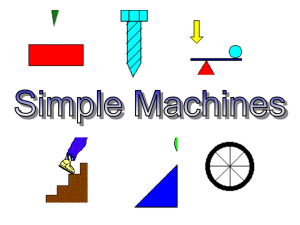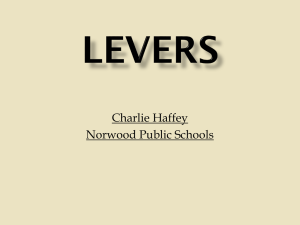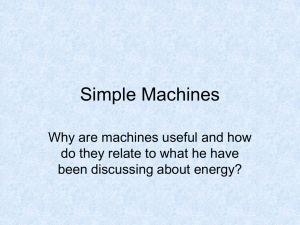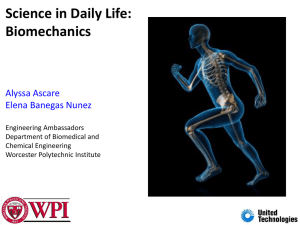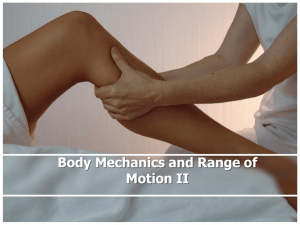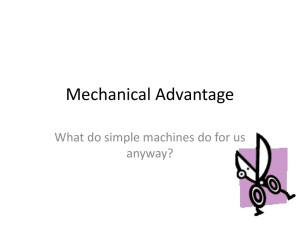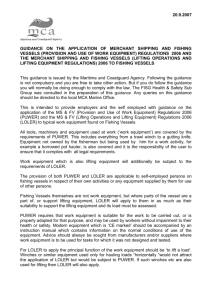Work, Power and Simple Machines
advertisement
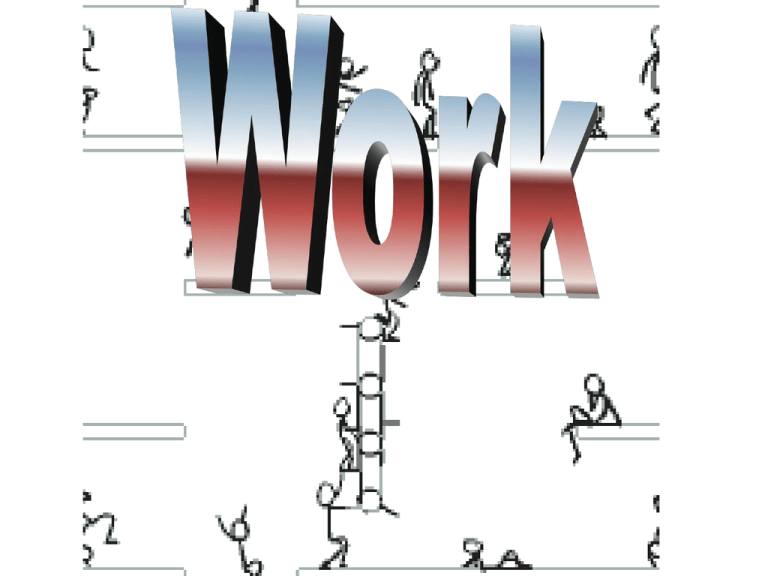
Work has a special meaning in physics. Unlike your everyday experience, where you go to an after school job and earn money, work in physics does not pay for your car insurance. Work is done on an object when a force is applied to an object and Work is only done if the the object is object displaced. moves a Do not confuse distance. applying a force Pushing or with doing work. pulling on an Work = Force x displacement (cosine of angle for object may the portion of the force parallel to the distance make you traveled)Only the force parallel to the direction sweat but you Newton of the displacement does work. Units: x Meter (Nm) do no work unless it Work is a scalar quantity moves. W F d co s units: Nm J Joule Read the following five statements and determine whether or not they represent examples of work. A teacher applies a force to a wall and becomes exhausted. NO A book falls off a table and free falls to the ground. YES A waiter carries a tray full of meals above his head by one arm across the room. (Careful! This is a tricky question.) NO A rocket accelerates through space. YES Power In Physics Power is the Rate of Doing Work P ow er W ork tim e P units: W t Nm s F d cos t W W att A watt is a small unit If you lift a glass of water (~2N) to your mouth (~0.5 m) in 1 second you do one joule of work and you are doing work at rate of one watt Since a watt is relatively small, power is often measured in kilowatts (kW) Simple Machines Simple Machines A simple machine is an object with few moving parts that redirects an applied force to perform work. Usually a simple machine is used to reduce the force needed to perform a task. Simple Machines and Rube Goldberg Work and Machines • Force of Effort - Fe - The amount of force that is applied to the machine. • Force of Resistance - Fr - The amount of force that the machine applies. • Distance of Effort - de - The distance the force of effort is applied. • Distance of Resistance - dr - The distance the machine applies the force. Force of Effort Force of Resistance Force of Resistance Distance of Resistance Force of Resistance L e v e r Lever F1 = Fr = Force of Resistance F2 = Fe = Force of Effort D1 = dr = Distance of Resistance D2 = de = Distance of Effort Fulcrum = Pivot Point Lever Classes First Class Lever Effort - Fulcrum - Resistance Second Class Lever Fulcrum - Resistance - Effort Third Class Lever Fulcrum - Effort - Resistance First Class Lever Pulleys redirect the force of effort. The number of pulleys and their arrangement can reduce the amount of effort force needed to raise a particular load. The number of lifting strands will determine the advantage to using a pulley system Pulleys 1 Lifting Strand How many lifting strands for each pulley system? 3 Lifting Strands 2 Lifting Strands 2 Lifting Strands 3 Lifting Strands Wi = Work Input – The Amount of Work applied to the machine Wi = Fede Fe=Force of Effort de=Distance of Effort Wo = Work Output – the Amount of Work transferred by the machine Wo = Frdr Fr=Force of Resistance dr=Distance of Resistance M echanical A dvantage = M A Fr Fe Ideal M echanical A dvantage = IM A de dr E fficiency Wo Wi E fficiency Fr d r Fe d e MA IM A x 100 0 0 x 100 0 0
